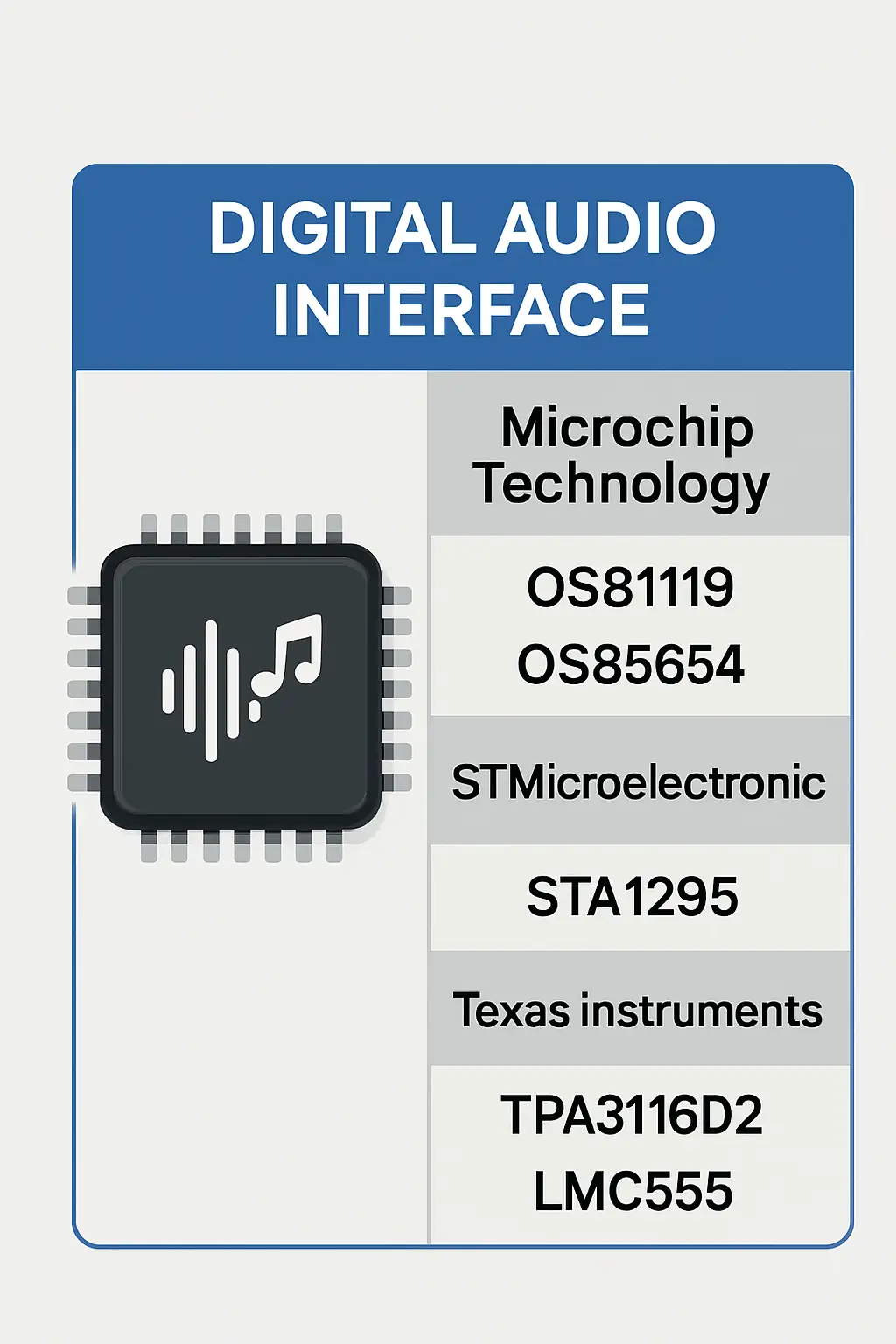Digital Audio Interface
The Digital Audio Interface is a key component within the Automotive Electronics domain, specifically under Infotainment & Digital Cockpit, and plays a vital role in the Audio Systems / AVAS (Acoustic Vehicle Alerting System) category. It serves as the communication bridge between various audio sources, such as smartphones, navigation systems, and onboard infotainment units, and the vehicle's audio output devices, including speakers, head units, and digital amplifiers.
This interface ensures high-quality audio transmission with minimal latency, supporting both analog and digital signal formats. It enhances the driving experience by enabling seamless integration of multimedia content, voice commands, and driver alerts. In modern vehicles, the Digital Audio Interface also supports advanced features like noise cancellation, 3D audio, and multi-zone sound systems, offering personalized listening experiences for drivers and passengers.
Used in both traditional internal combustion engine vehicles and electric vehicles (EVs), the Digital Audio Interface contributes to the overall safety and comfort of the cabin environment. It is essential for AVAS compliance, ensuring that low-speed electric vehicles emit audible warnings to pedestrians. Additionally, it supports connectivity standards such as USB, Bluetooth, and CAN bus, making it a versatile and integral part of the digital cockpit.
Overall, the Digital Audio Interface enhances the functionality, performance, and user experience of automotive audio systems, making it a crucial component in modern vehicle design.
Details
Digital Audio Interface

Related Parts
| Series Name | Description | Manufacturer Name | Attribute Description |
|---|---|---|---|
| Microchip Technology | 100Base-TX Ethernet PHY transceiver, 3.3V operation, integrated magnetics, MII/RMII interface, low EMI, 48-pin LQFP package, supports IEEE 802.3u, extended temperature range. | ||
| Microchip Technology | 10/100 Mbps Ethernet PHY, 3.3V supply, MII/RMII interface, low power consumption, integrated signal conditioning, ESD protection, IEEE 802.3 compliant, small footprint package. | ||
| Microchip Technology | 4-channel LED driver, 60V output, PWM dimming up to 20kHz, I²C interface, operates from -40°C to +125°C, 24-pin QFN package, supports constant current mode, up to 150mA per channel. | ||
| Microchip Technology | 400V, 8A output, 1MHz switching frequency, integrated MOSFET, PWM control, 16-pin QFN package, supports buck-boost topology, input voltage up to 40V, high efficiency up to 95%. | ||
| Microchip Technology | 3.3V, 10/100 Ethernet, 48-pin, supports MII/RMII, integrated PHY, MAC, and memory, low power, industrial temp range, embedded applications. | ||
| STMicroelectronics | 32-bit ARM Cortex-M4 MCU, 128KB Flash, 32KB RAM, 48MHz CPU, integrated FPU, multiple timers, UART, SPI, I2C, 12-bit ADC, low-power modes, operating voltage 1.7V to 3.6V, 40-pin package. | ||
| Texas Instruments | 2-channel Class-D amplifier, 50W per channel at 4Ω, 90W bridged, 4.5V to 26V supply, >90% efficiency, low THD+N, integrated protection, supports stereo/bridge modes, I²C control, 32-pin HTSSOP. | ||
| Texas Instruments | Operational temperature: -40°C to 125°C, Supply voltage: 1.5V to 15V, Low power consumption, CMOS technology, High output current capability, TTL-compatible. |








.png?x-oss-process=image/format,webp/resize,h_32)










